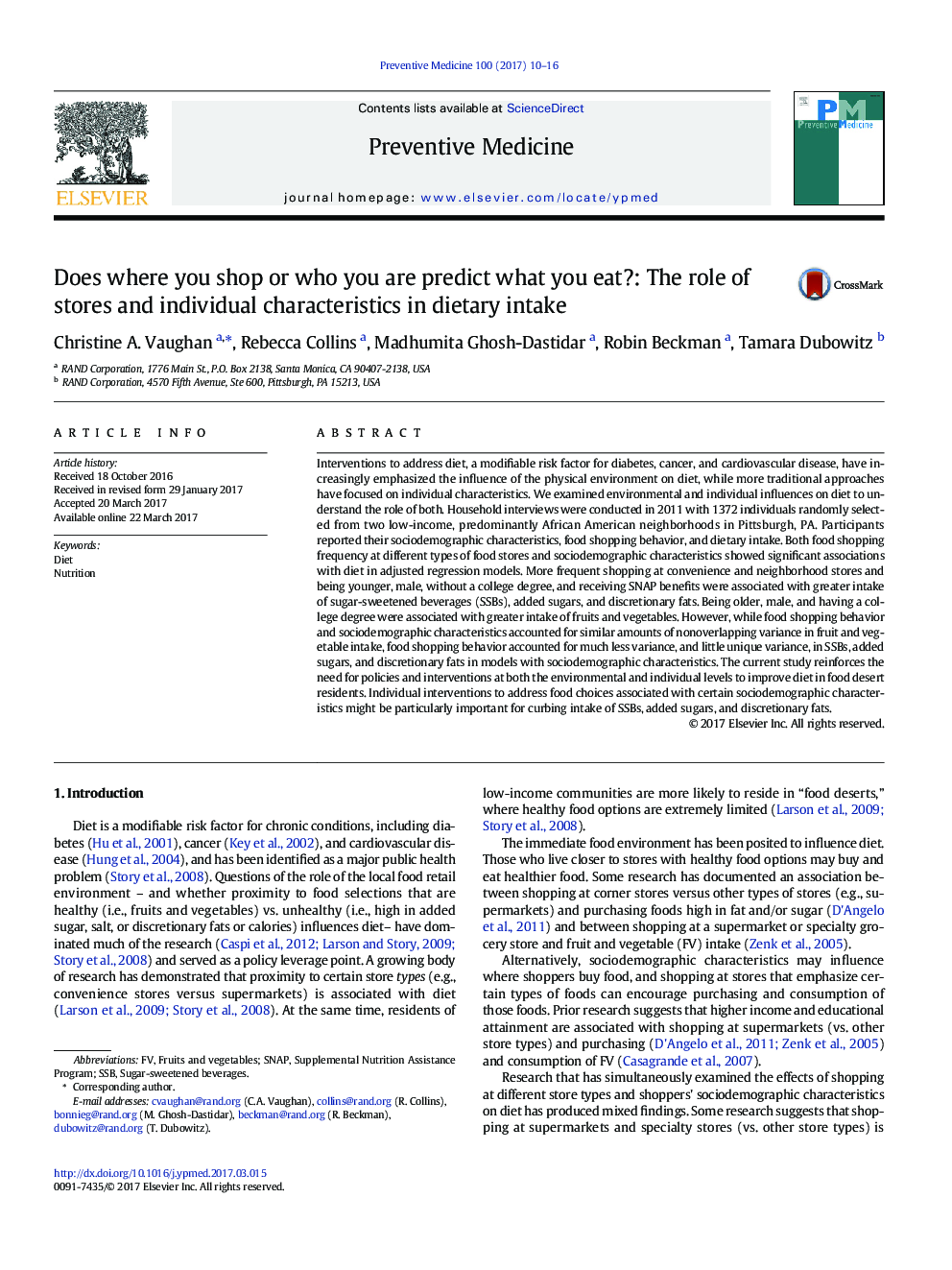| کد مقاله | کد نشریه | سال انتشار | مقاله انگلیسی | نسخه تمام متن |
|---|---|---|---|---|
| 5635597 | 1581614 | 2017 | 7 صفحه PDF | دانلود رایگان |
- Both environmental and individual influences were significantly associated with diet.
- Individual factors explained more unique variance in unhealthy diet than environmental.
- Policies are needed at the environmental and individual levels to improve diet.
- Individual interventions might be particularly important for curbing unhealthy diet.
Interventions to address diet, a modifiable risk factor for diabetes, cancer, and cardiovascular disease, have increasingly emphasized the influence of the physical environment on diet, while more traditional approaches have focused on individual characteristics. We examined environmental and individual influences on diet to understand the role of both. Household interviews were conducted in 2011 with 1372 individuals randomly selected from two low-income, predominantly African American neighborhoods in Pittsburgh, PA. Participants reported their sociodemographic characteristics, food shopping behavior, and dietary intake. Both food shopping frequency at different types of food stores and sociodemographic characteristics showed significant associations with diet in adjusted regression models. More frequent shopping at convenience and neighborhood stores and being younger, male, without a college degree, and receiving SNAP benefits were associated with greater intake of sugar-sweetened beverages (SSBs), added sugars, and discretionary fats. Being older, male, and having a college degree were associated with greater intake of fruits and vegetables. However, while food shopping behavior and sociodemographic characteristics accounted for similar amounts of nonoverlapping variance in fruit and vegetable intake, food shopping behavior accounted for much less variance, and little unique variance, in SSBs, added sugars, and discretionary fats in models with sociodemographic characteristics. The current study reinforces the need for policies and interventions at both the environmental and individual levels to improve diet in food desert residents. Individual interventions to address food choices associated with certain sociodemographic characteristics might be particularly important for curbing intake of SSBs, added sugars, and discretionary fats.
Journal: Preventive Medicine - Volume 100, July 2017, Pages 10-16
